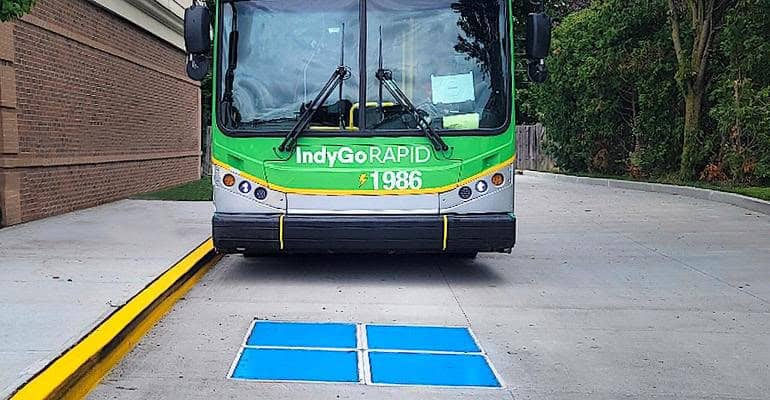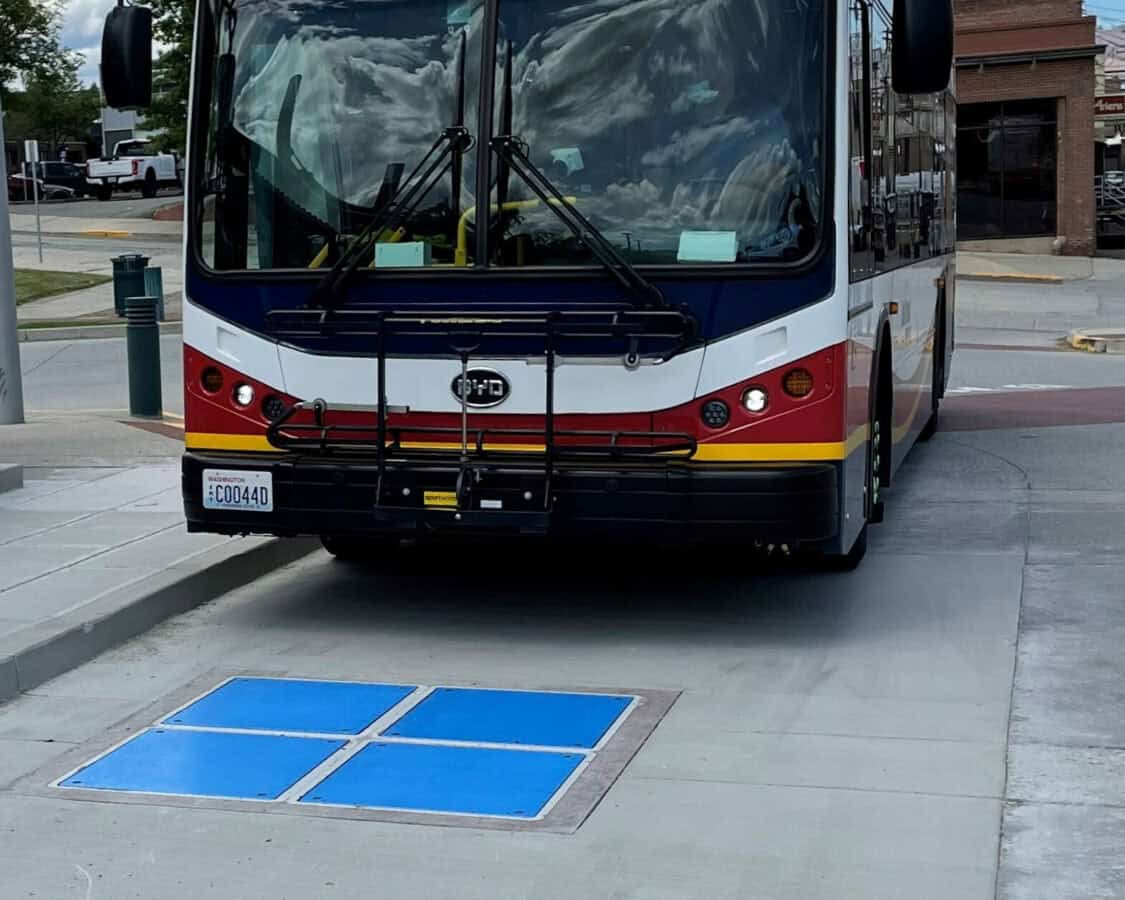- InductEV’s high-power wireless EV charging systems have been in use since 2017, powering commercial fleets in North America and Europe.
- Wireless charging can save fleet operators 25% or more compared to traditional wired systems.
- Tesla’s decision to include wireless charging in its Robotaxi highlights the growing importance of this technology in electric vehicles.
Wireless electric vehicle (EV) charging is no longer a future fantasy. It’s happening right now. What used to feel like science fiction is quickly becoming a practical solution, with companies like InductEV. Tesla’s recent decision to include low-power wireless charging in its upcoming Robotaxi shows that the industry is catching up to what many have believed for a while: wireless EV charging is already here.
ADVERTISEMENT
Wires are a hassle. They wear out, get tangled, get stolen or broken, and are just plain inconvenient, whether you’re a regular EV driver or managing a fleet of vehicles. That’s where InductEV comes in. They’ve been quietly changing the charging game with their high-power wireless EV chargers, which work across a variety of industries, offering a smarter, more scalable way to charge EVs. As CEO John F. Rizzo pointed out, “Tesla’s entry into the wireless charging space is exciting and further validates the vision that InductEV has been pursuing since inception.”
There’s also more at stake here. Traditional wired depot charging is holding us back. The constant need to plug in? It’s a logistical nightmare for commercial fleets. “Our focus is on the efficient electrification and decarbonization of commercial fleets, municipal transit agencies, and port and freight terminals,” Rizzo highlighted.
InductEV’s patented on-route wireless charging solutions enable these fleets to swap diesel for electric without compromising on efficiency. This is real progress, one that’s slashing operational costs by at least 25%, depending on the use case.

The benefits go way beyond just saving money. It’s doing what’s right for the environment. Transportation is one of the biggest sources of greenhouse gas emissions, so sticking with current charging methods is only slowing us down in the shift to cleaner energy.
InductEV’s technology is currently powering double-decker electric buses in Seattle’s Sound Transit and port tractors at the AP Moeller Maersk Terminal in New Jersey. Cities like Indianapolis and Martha’s Vineyard are already using these wireless chargers, helping their fleets stay as sustainable as possible.
ADVERTISEMENT
Wireless EV charging is expanding fast in the U.S., and companies like InductEV are leading the pack with scalable, high-power solutions that can meet the demands of the largest commercial fleets. Whether it’s buses, trucks, or even Tesla’s upcoming Robotaxi, the technology is proving itself in real-world applications daily.
The numbers don’t lie. InductEV has 116 global patents, with 115 more pending, and their wireless charging systems have been operational in Europe and North America since 2017. They have made big moves, including partnerships with major vehicle manufacturers like Phoenix Motor Inc., Volvo, and the Chinese EV company, BYD.

Take Volvo’s collaboration as a real-world example of how well wireless charging works. In Gothenburg, it’s been powering an all-electric taxi fleet for three years without any downtime caused by the charging system. That means the taxis keep running smoothly without any interruptions, thanks to the reliable wireless charging setup.
Why should fleet operators stay stuck with outdated depot charging stations when wireless charging is already here and working? In commercial transport, every minute matters. Wireless EV charging is a key ingredient to keeping things running smoothly, cutting down on downtime, and improving efficiency.
As Tesla prepares to roll out its Robotaxi fleet in 2027, the spotlight on wireless EV charging will only grow brighter. But why wait? Wireless charging is for everyone. Whether you’re managing a fleet of buses or simply looking to ditch the hassle of traditional chargers for your personal vehicle, the future is wireless.
ADVERTISEMENT

SOURCE | IMAGES: INDUCTEV
FTC: We use income-earning auto affiliate links. Learn more.











